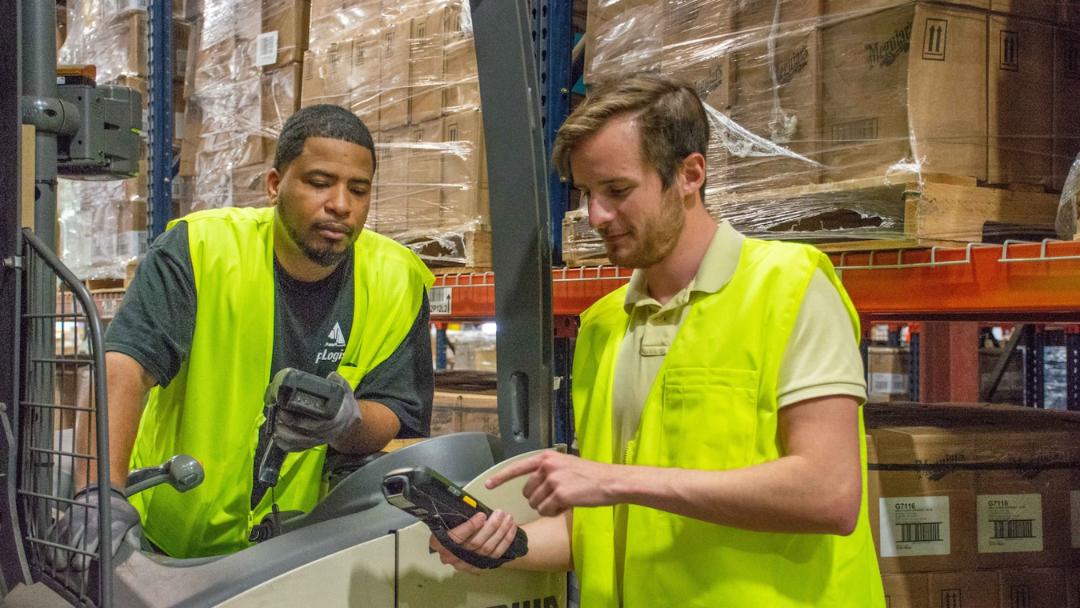Managing your remote workforce explained
Many organizations learned the hard way that managing a remote workforce requires more effort, structure, and intention than overseeing in-office teams. They faced challenges with communication, meeting deadlines, and handling workflow. Businesses that embraced the change, however, reaped the benefits of a more productive and efficient workforce.
What made the difference? Effective strategies for workforce management.
Read on to revisit the fast-paced adoption of remote workforces, the intricacies of management, and strategies for organizational leaders to optimize team efficiency and oversight moving forward.
Exploring the growing remote work landscape
The landscape of work underwent a seismic shift in recent years with the global COVID-19 pandemic. As it thrust organizations into swift adaptation, the advantages of remote work became apparent. As of 2023, reports reveal that 12.7% of full-time employees work remotely and 28.2% of workers have adapted to a hybrid work model.
Factors driving the expansion of remote work
Beyond the pandemic, there are three notable forces that contributed to the growth of remote workforces in recent years:
- Technological advancements enabling seamless digital collaboration.
- The potential for increased productivity from reduced distractions and personalized work environments.
- The dissolution of geographical barriers, giving companies access to diverse talent pools.
Moreover, the flexibility and independence offered in remote or hybrid setups now play a crucial role in attracting and retaining talent. A study from FlexJobs found that 63% of employees prioritize working remotely as the most important aspect of their job, surpassing considerations such as salary (61%), flexible schedules (55%), work-life boundaries (54%), and having a good boss (48%).
6 strategies for boosting your remote workforce management
The rapid shift to remote work, originally born out of necessity, is now a strategic choice for teams worldwide — reshaping the future of business by prioritizing flexibility, adaptability, and efficiency. Here are some critical elements that must be in place to improve their management of remote teams.
1. Set clear expectations
Articulating organizational goals, deadlines, and performance metrics is essential to foster a successful remote workforce. This should include defining communication norms, availability expectations, and project milestones. It’s important to regularly revisit and clarify established processes and procedures while encouraging open dialogue to ensure alignment and understanding across the organization.
2. Train employees and provide the right tools for working remotely
Remote employees may need training on technology tools, cybersecurity measures, time management strategies, and best practices for digital collaboration to reach their potential. When onboarding distance workers, make sure you provide access to software, hardware, and technical support that they may need to be successful. And because training should be continuous, be sure to offer regular upskilling opportunities for sustained growth and optimal performance.
3. Create well-documented procedures and build streamlined workflows
Well-documented processes are critical for both new hires and long-time team members. Streamlined workflows, on the other hand, can be achieved through automation or outsourcing, which can reduce the need for oversight and allow you to focus on value-building tasks. In remote settings, comprehensive procedures are integral to compensate for the lack of in-person guidance. Be sure to review and regularly update written procedures.
4. Introduce opportunities for collaboration and virtual team-building
Managers can strengthen their teams by using various activities such as online office games, virtual book clubs, professional development webinars, and industry-specific trivia games, among others. Putting effort into virtual team building can be essential to mitigate social isolation and strengthen connections among remote employees.
5. Provide regular recognition and continuous feedback
Remote work can easily lead to loneliness and monotony, which underscores the importance of having a structured recognition program that spotlights individual and team accomplishments. Recognizing milestones and offering performance awards significantly boosts team morale and can shape organizational culture. Along with recognition, offer constructive feedback to aid talent in reaching their potential.
6. Check in with employees often and constantly communicate
Be sure to schedule regular one-on-one check-ins and team meetings to discuss progress, challenges, and goals. This typically requires multiple communication channels, such as email, chat, and video calls. Managers should use these different methods to actively listen, empathize, and address concerns consistently.
Common challenges when managing remote employees
Organizational leaders typically encounter challenges when trying to optimize their management practices. These include:
- Maintaining effective communication: Buffer’s 2022 State of Remote Work report found that 17% of remote workers encountered challenges related to collaboration and communication in the preceding year. Addressing potential barriers that hinder clarity and team connection requires intentional effort and investing in effective digital tools.
- Fostering team collaboration and cohesion: The gaps caused by physical distance can make it difficult to foster a cohesive and connected team culture. Initiatives such as regular meetings, virtual coffee breaks, relationship-building activities, and company challenges can boost a remote team’s cohesiveness.
- Performance monitoring: Managers working to maintain accountability and productivity standards cite difficulties in monitoring performance remotely without micromanaging.
- Establishing boundaries: Establishing and standardizing work-life boundaries can be challenging due to the overlap between our personal and professional lives. This is especially true in remote setups.
- Maximizing the use of technology: Enhancing the integration and use of technology often requires proficiency with multiple platforms. Ensuring smooth integration, accessibility, and usage among geographically dispersed team members can add to these difficulties.
- Managing talent in different time zones: Scheduling, coordination, and real-time collaboration are inherently more difficult to manage when people work in different time zones. Success requires adaptive planning and flexible strategies.
Key benefits of an effectively managed remote workforce
By driving efficiency and nurturing a more cohesive work environment, you can anticipate the following advantages:
- Increased productivity as clearer expectations, streamlined workflows, and more effective communication optimize team output.
- Stronger engagement due to better systems for recognition, regular feedback, and skill development, which can increase employee morale and commitment.
- Reduced overhead costs associated with maintaining physical office spaces (e.g., utilities, rent, and workplace supplies).
- Improved access to a broader talent pool globally.
- Greater flexibility and a better work-life balance for employees, resulting in higher job satisfaction and less burnout.
- Innovative solutions and approaches to problem-solving with diverse perspectives from a distributed team.
- Resilience and business continuity in the face of operational disruptions.
Enhancing remote workforce management with strategic solutions
It’s clear that adept management techniques play a pivotal role in harnessing the full potential of geographically dispersed talent. Because effective management is the linchpin to propelling productivity and fostering more unified working environments, partnering with staffing providers like Employbridge becomes a smart and strategic move.
Employbridge not only can help you find high-quality remote talent on demand but can help improve managerial proficiency. Leverage our workforce-as-a-service solution to streamline recruitment and management while championing talent development and cultivating a future-ready team. With access to superior talent and insightful data, you can better navigate common challenges and achieve more impactful results.
Ready for solutions and managerial support that ensure a more agile, efficient, and future-proof remote workforce Contact us to learn more about how Employbridge can support your organization’s unique needs.



